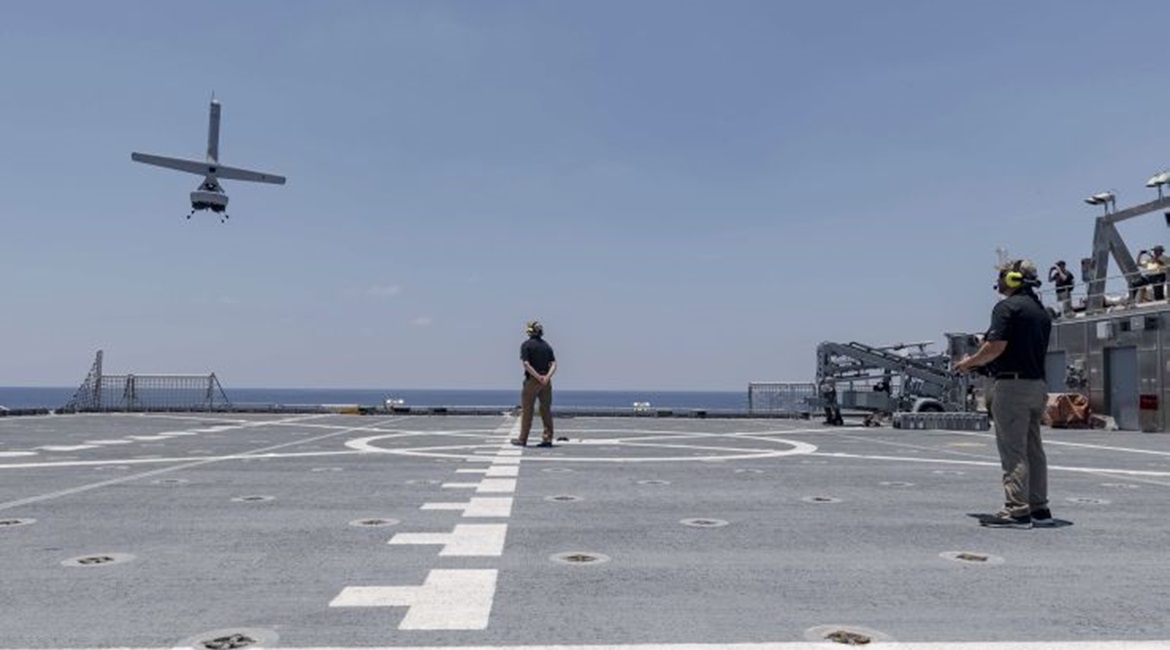
The Martin UAV V-Bat vertical take-off and landing (VTOL) surveillance unmanned aerial vehicle’s (UAV’s) ability to autonomously turn into the wind in a hover is one reason why a company executive believes the aircraft has found success with maritime military opportunities.
Defence Research and Development Canada (DRDC) in November 2020 awarded Kongsberg Geospatial, offering the V-Bat 128, a USD1.03 million contract from a 2019 DRDC Innovation call for proposals. This sought a high endurance and small footprint intelligence, surveillance, and reconnaissance (ISR) UAV.

A Martin UAV V-Bat VTOL unmanned aircraft prepares to land on the flight deck of the Military Sealift Command’s Spearhead-class catamaran expeditionary fast transport vessel USNS Spearhead (T-EPF 1) on 24 July 2019. The V-Bat’s ability to autonomously turn into the wind in a hover is one reason why a Martin UAV executive believes the aircraft has found success with maritime military opportunities. (US Navy)
The V-Bat 128 flew land trials in Oklahoma during the week of 15 March and will perform trials from unspecified Canadian Coast Guard (CCG) vessels on Canada’s west coast in the third quarter of 2021 and its east coast in the first quarter of 2022.
Heath Niemi, Martin UAV chief development officer, told Janes on 18 February that the V-Bat, while launching vertically, will weathervane based on the force of the wind. He said the most volatile and chaotic winds are found on a ship. This is because vortices are created when winds go over a vessel’s gunwhales.
Looking to read the full article?
Gain unlimited access to Janes news and more...


